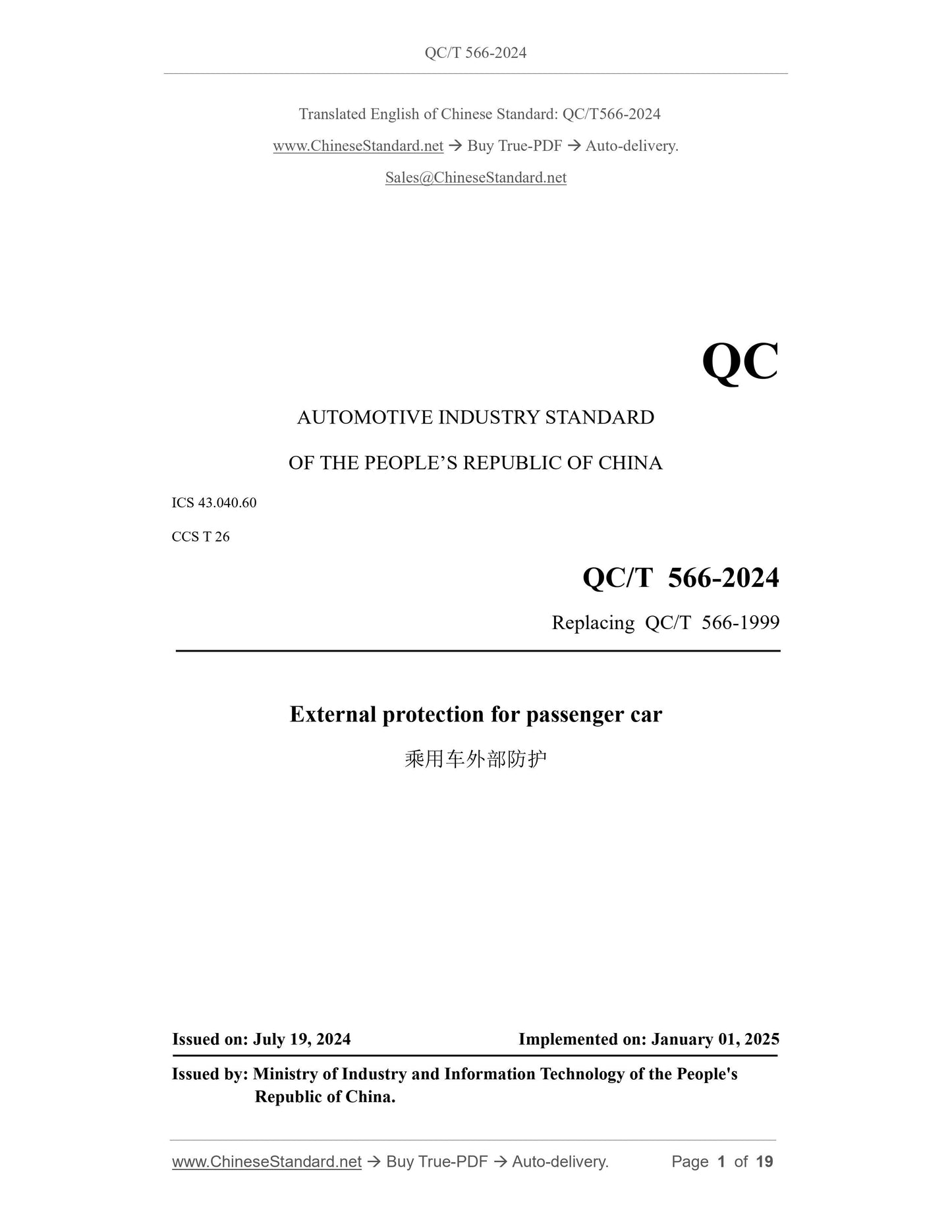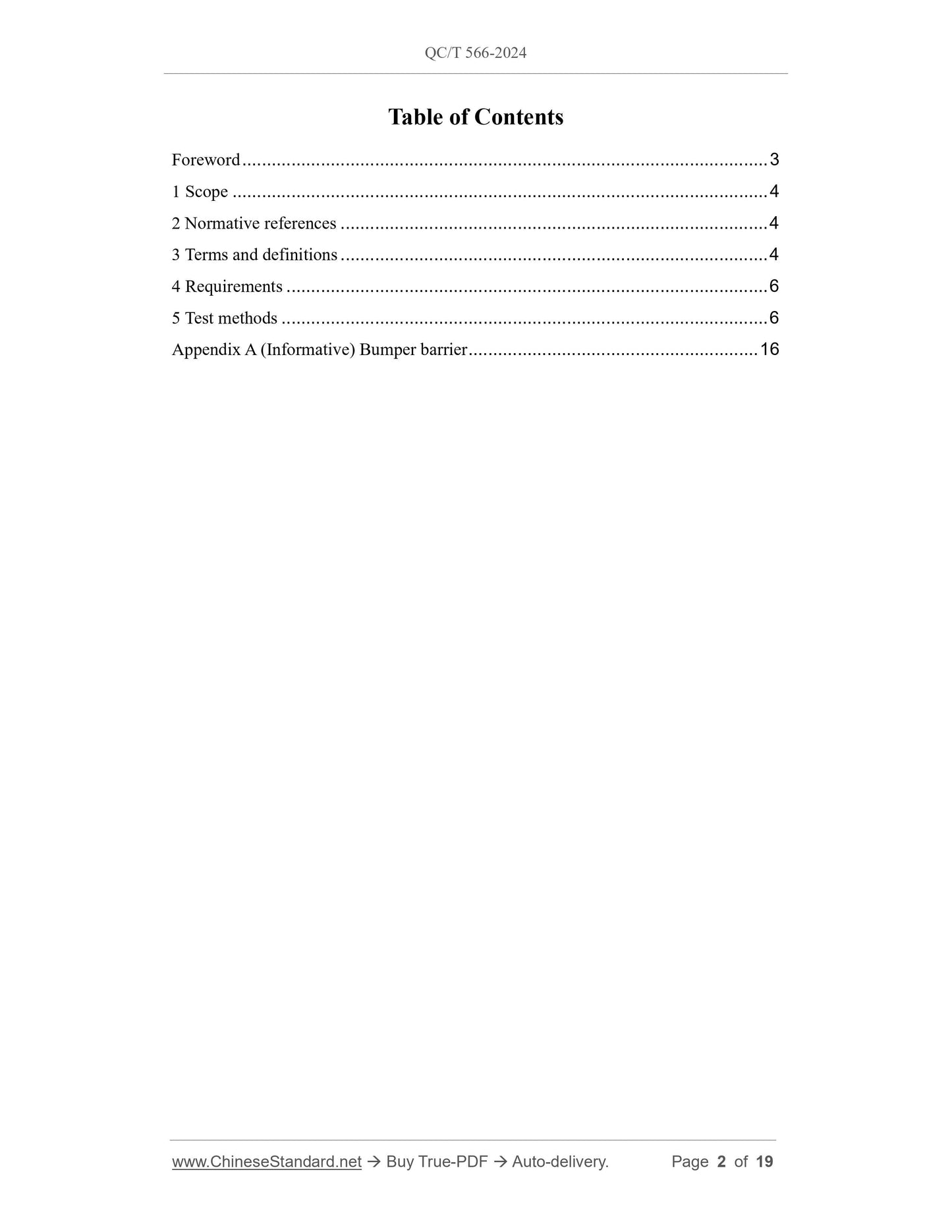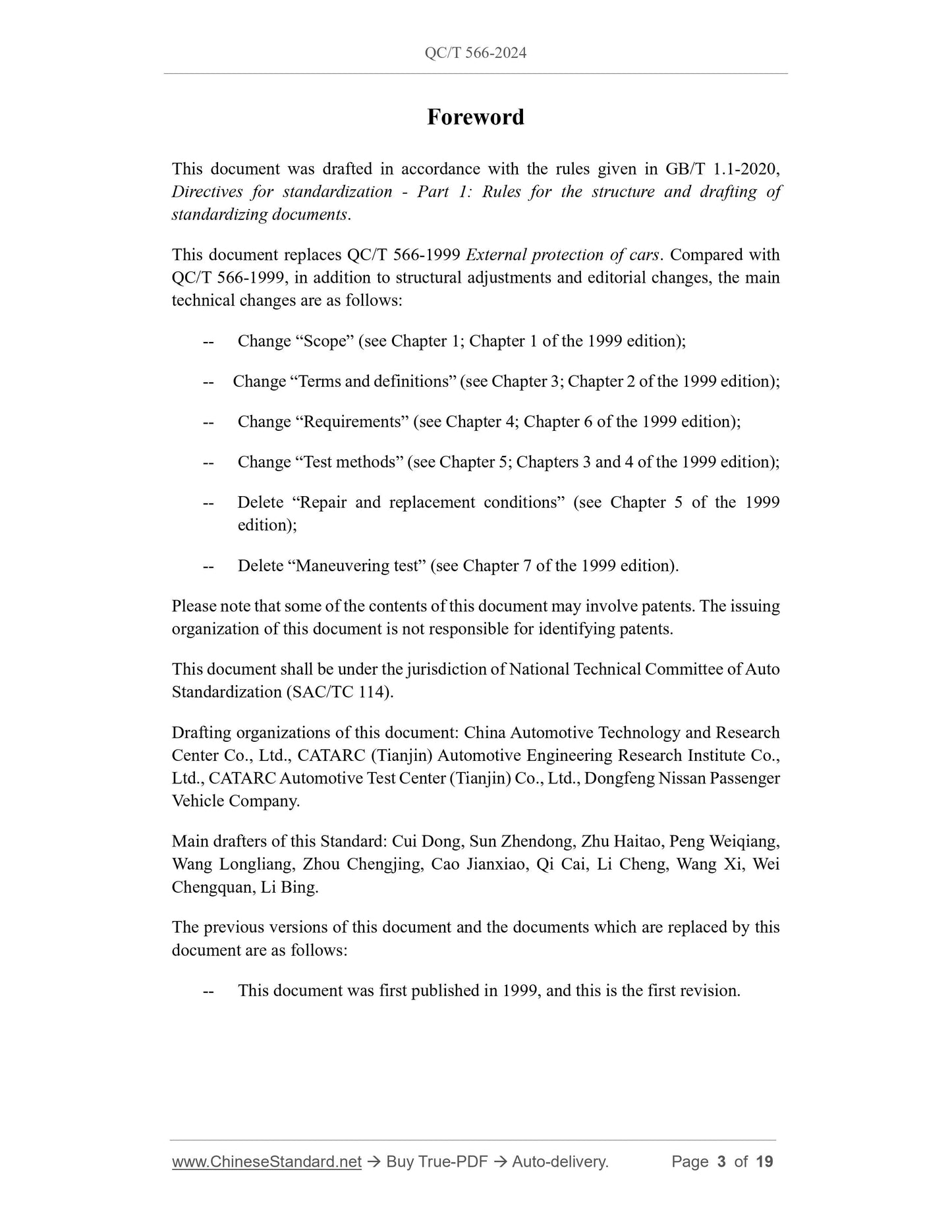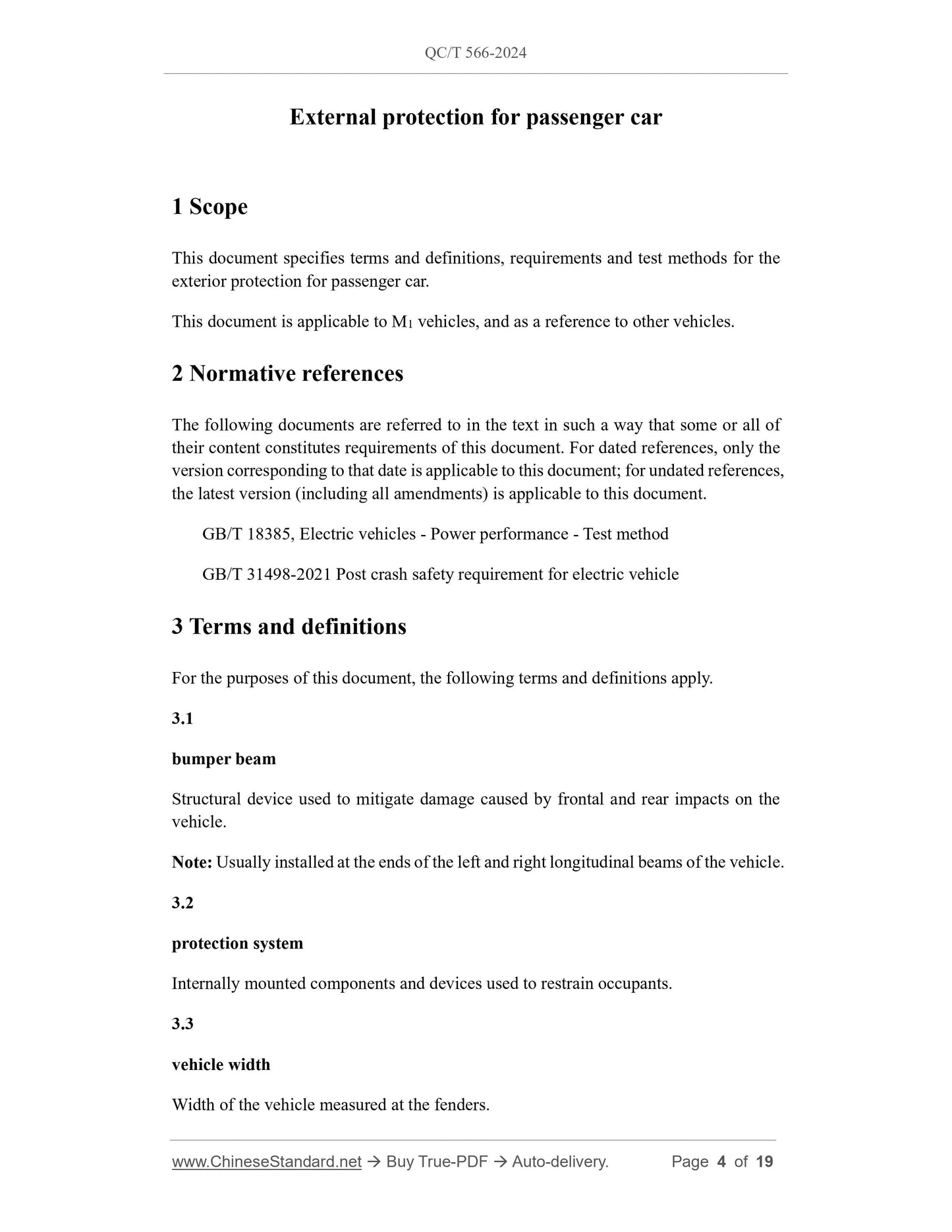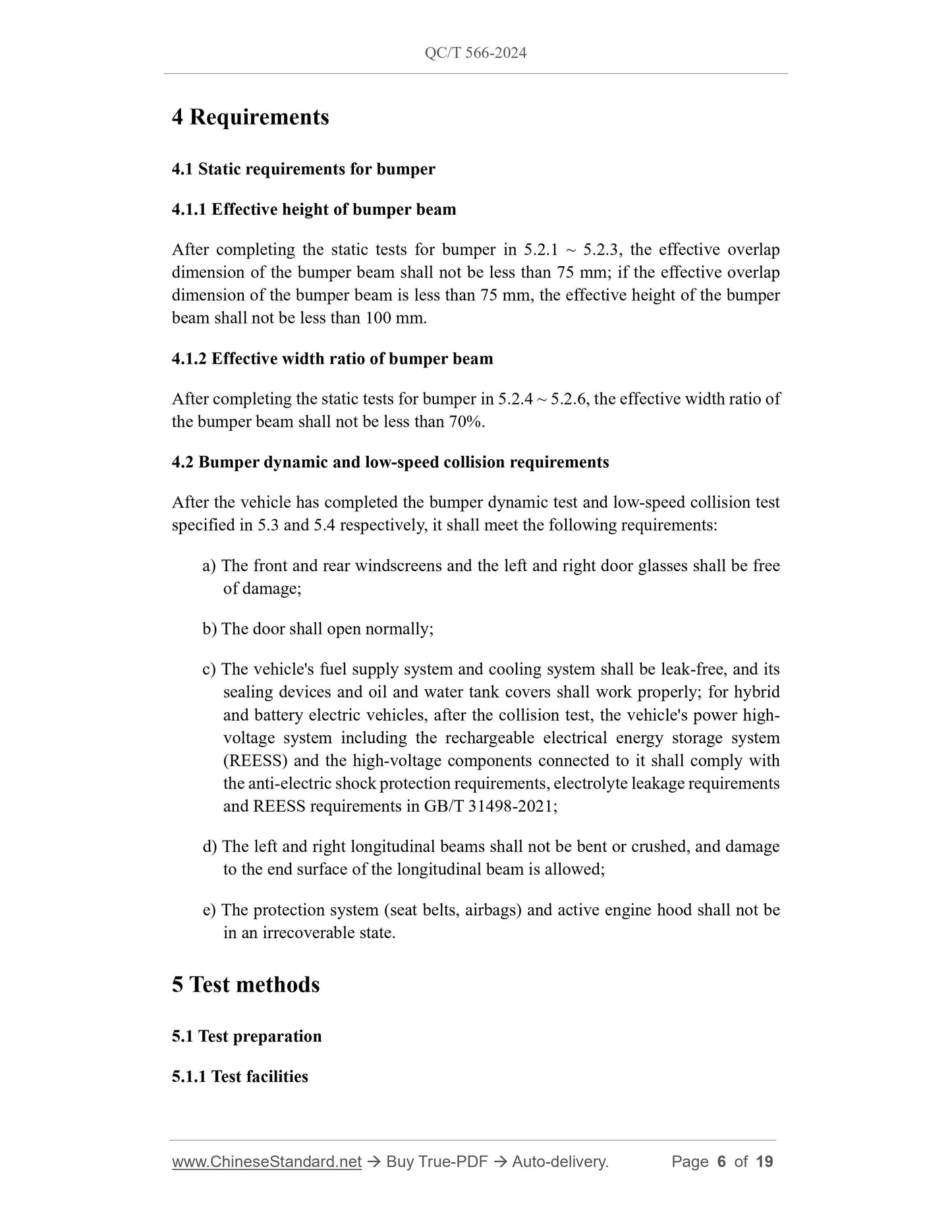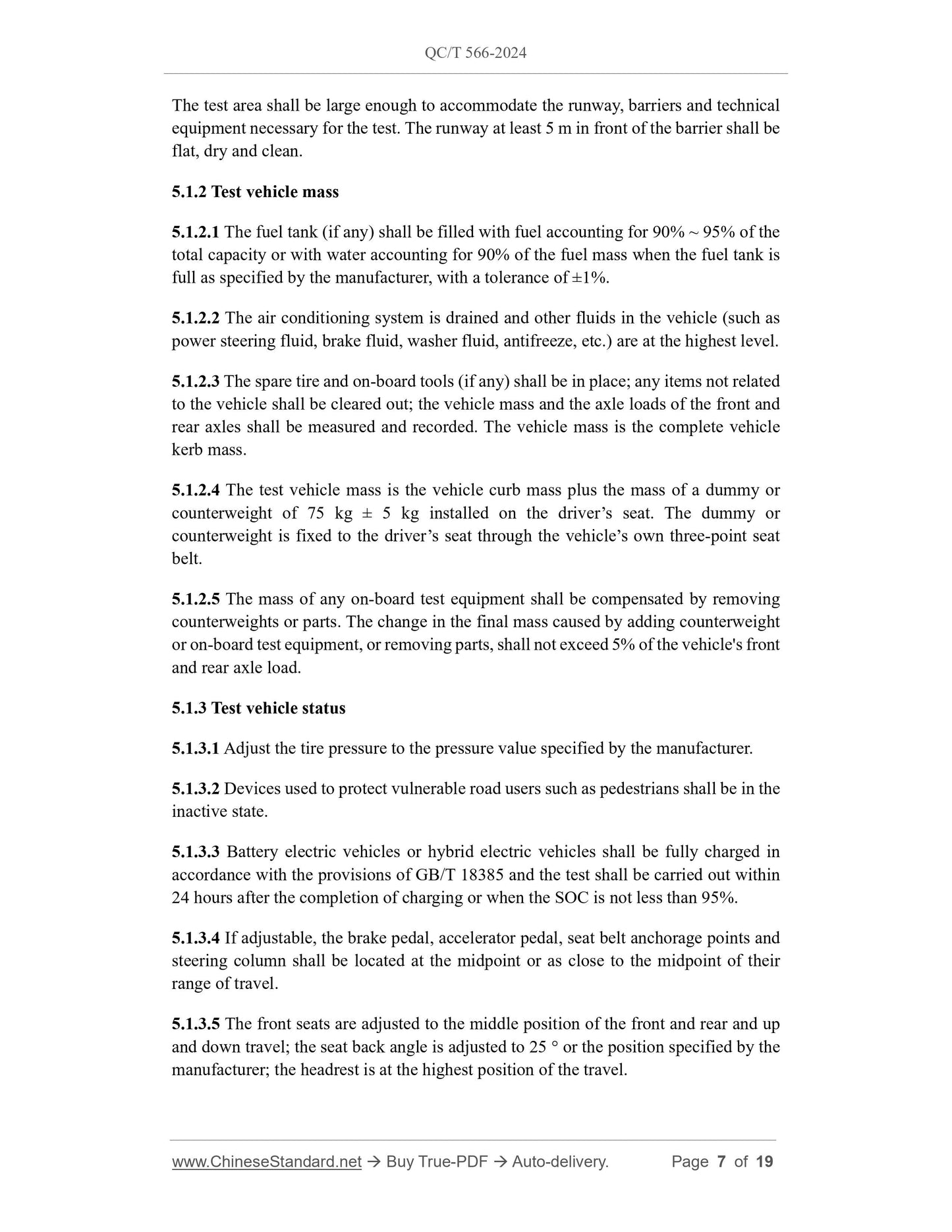1
/
of
6
www.ChineseStandard.us -- Field Test Asia Pte. Ltd.
QC/T 566-2024 English PDF (QC/T566-2024)
QC/T 566-2024 English PDF (QC/T566-2024)
Regular price
$245.00
Regular price
Sale price
$245.00
Unit price
/
per
Shipping calculated at checkout.
Couldn't load pickup availability
QC/T 566-2024: External protection for passenger car
Delivery: 9 seconds. Download (and Email) true-PDF + Invoice.Get Quotation: Click QC/T 566-2024 (Self-service in 1-minute)
Newer / historical versions: QC/T 566-2024
Preview True-PDF
Scope
This document specifies terms and definitions, requirements and test methods for theexterior protection for passenger car.
This document is applicable to M1 vehicles, and as a reference to other vehicles.
Basic Data
| Standard ID | QC/T 566-2024 (QC/T566-2024) |
| Description (Translated English) | External protection for passenger car |
| Sector / Industry | Automobile and Vehicle Industry Standard (Recommended) |
| Classification of Chinese Standard | T26 |
| Classification of International Standard | 43.040.60 |
| Word Count Estimation | 18,168 |
| Date of Issue | 7/19/2024 |
| Date of Implementation | 1/1/2025 |
| Issuing agency(ies) | Ministry of Industry and Information Technology |
Share
